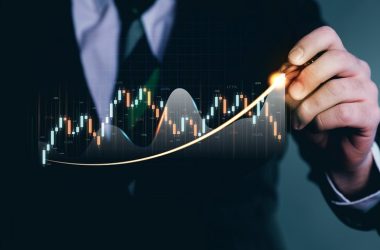Global macro investing is an investment strategy that focuses on analyzing and capitalizing on broad economic and geopolitical trends to make investment decisions. This article explores the concept of global macro investing, the key factors involved, and how investors can identify opportunities in the global markets.
Understanding Global Macro Investing:
Global macro investing involves taking positions in various asset classes, including currencies, commodities, equities, and fixed income securities, based on macroeconomic trends and global events. Key components of global macro investing include:
Economic Analysis: Analyzing economic indicators such as GDP growth, inflation rates, unemployment figures, and central bank policies to assess the overall health and direction of global economies.
Geopolitical Events: Monitoring geopolitical developments, geopolitical tensions, trade agreements, sanctions, and political stability to identify potential risks and opportunities in global markets.
Market Sentiment: Gauging market sentiment, investor sentiment, and risk appetite to understand market dynamics and sentiment-driven movements in asset prices.
Asset Allocation: Allocating capital across different asset classes, regions, and sectors based on macroeconomic outlooks, risk-reward profiles, and investment objectives.
Investment Strategies in Global Macro Investing:
Currency Trading: Global macro investors often trade currencies based on relative strength, interest rate differentials, and geopolitical developments. They may take long or short positions in major currency pairs or emerging market currencies.
Commodity Investments: Commodity markets, including oil, gold, agricultural products, and industrial metals, are closely watched by global macro investors. They analyze supply-demand dynamics, geopolitical factors, and global economic trends to make commodity investment decisions.
Equity and Fixed Income Allocation: Global macro investors allocate capital to equities and fixed income securities based on macroeconomic trends, sectoral analysis, and regional outlooks. They may overweight or underweight specific sectors or regions based on their views.
Derivatives Strategies: Global macro investors may use derivatives such as options, futures, and swaps to hedge risk, implement leverage, or capitalize on specific market movements based on their macroeconomic analysis.
Benefits of Global Macro Investing:
Diversification: Global macro investing offers diversification benefits by investing across multiple asset classes, regions, and sectors, reducing portfolio concentration risk.
Opportunistic Approach: Global macro investors can capitalize on market inefficiencies, mispricings, and dislocations driven by macroeconomic factors, geopolitical events, or sentiment shifts.
Flexibility: Global macro investing provides flexibility to adjust investment strategies based on changing macroeconomic conditions, market trends, and risk-reward profiles.
Risk Management: Global macro investors use risk management techniques such as position sizing, stop-loss orders, and portfolio hedging to manage risk exposure and preserve capital.
Challenges of Global Macro Investing:
Macro Uncertainty: Global macro investing involves navigating macroeconomic uncertainties, geopolitical risks, and unexpected events that can impact market dynamics and investment outcomes.
Market Volatility: Global macro strategies may experience heightened volatility due to macroeconomic data releases, geopolitical developments, and market sentiment shifts.
Timing and Execution: Timing market entry and exit points based on macroeconomic analysis requires skill, experience, and timely execution to capture investment opportunities effectively.
Conclusion: Leveraging Global Macro Insights for Investment Success
Global macro investing provides investors with a comprehensive framework to analyze macroeconomic trends, geopolitical events, and market dynamics to make informed investment decisions. By integrating economic analysis, geopolitical risk assessment, asset allocation strategies, and risk management techniques, global macro investors can identify opportunities, manage risks, and navigate global markets successfully. However, it’s essential for investors to stay informed, continuously monitor macro trends, adapt to changing market conditions, and execute investment strategies with discipline and agility to achieve investment success in the dynamic global landscape.












 Agree to our terms & conditions.
Agree to our terms & conditions.